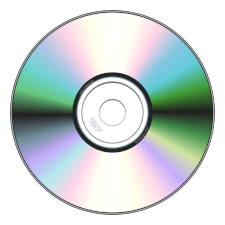CD
Stands for "Compact Disc."
A CD is a type of optical media for storing digital audio and data. CDs are circular discs, 120 mm (4.7 in) in diameter and 1.2 mm (0.047 in) thick. The underside of a CD consists of protective plastic over a reflective layer containing digital data, encoded as a series of pits and lands read by a laser as the disc spins in an optical drive. A standard CD can store 700 MB of data or up to 80 minutes of digital audio.
CDs were first introduced in 1982 by Sony and Philips as a new music format. Unlike analog mediums like vinyl records and audio cassettes, you can listen to a CD an unlimited number of times without any loss of quality due to wear. CDs also separate audio into distinct audio tracks that you can jump directly to or skip over. All audio CDs use the same audio encoding format, known as the Red Book specification — two-channel (stereo) 16-bit PCM audio sampled at 44.1 kHz.
Later in the 1980s, the CD was adapted to store computer data on CD-ROM discs. Since a single CD-ROM disc could contain as much data as several hundred floppy disks, they were an ideal format for distributing multimedia software and games. Recordable (CD-R) and rewritable (CD-RW) discs eventually allowed home computer users to burn their own CDs to share files, make custom music mixes, and back up their computers.
NOTE: Later optical disc formats like DVD and Blu-Ray use the same dimensions as CDs but with much smaller pits and lands that store data more densely. This allows optical drives designed for DVDs and Blu-Ray discs to read and play CDs.
 Test Your Knowledge
Test Your Knowledge